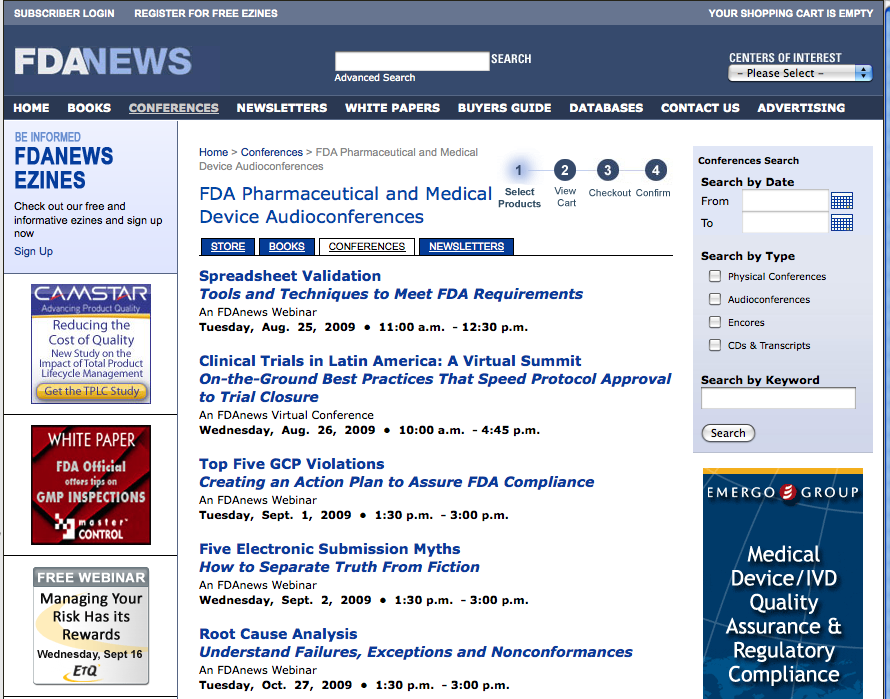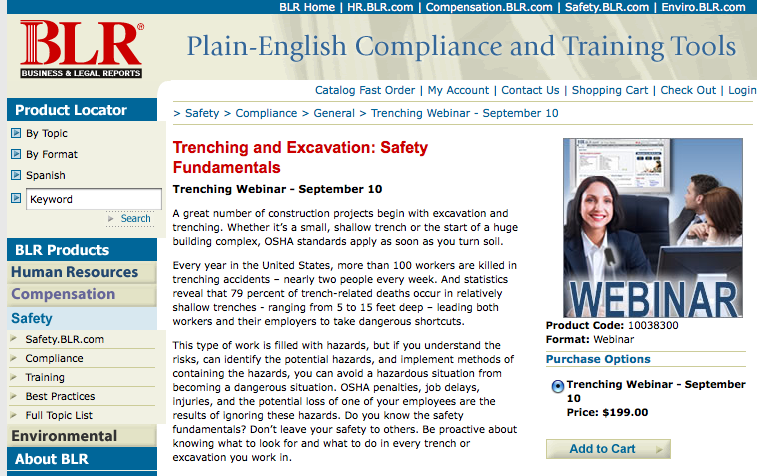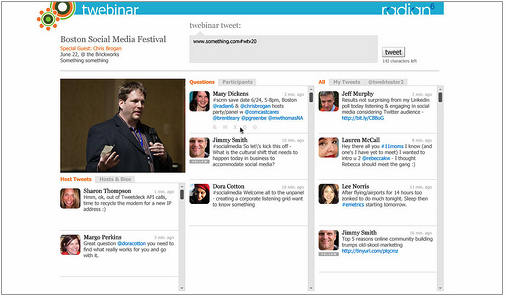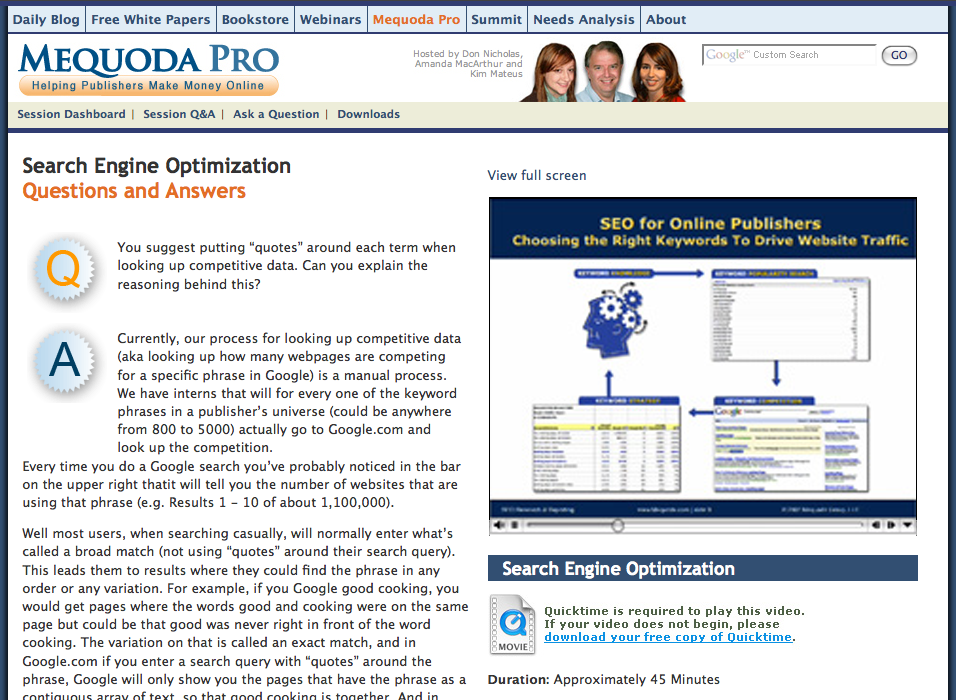Audio conferences, web conferences, webinars, video conferences, and on-demand playback, oh my!
There are five different types of digital event formats described by Beacon Live in their Which Content Delivery Medium is Right for Your Business report: audio conferences, web conferences, webinars, video conferences, and on-demand playback.
But which of these live mediums work the best with your audience? Here are some tidbits from the report that can help you decide.
Content Delivery Option #1: Audio Conferencing
Everyone in business has access to a phone. And considering these days that more and more people have cell phones, Blackberries, iPhones, etc., people can be part of a call from almost anywhere at any time: the corner coffee shop, the airport, even the beach.
Industries that audio conferences work best with:
Pretty much any industry can utilize an audio conference. It doesn’t require a computer or anything other than a telephone, which most people have.
Example: FDAnews has made audio conferences a huge chunk of their online revenue.
Content Delivery Option #2: Web Conferencing
According to the website Internet World Stats, 74.4 percent of the population in North America uses the Internet. From 2000 to 2008, the number of users in North America grew by over 130 percent! No doubt, any business that considers itself a serious business has Internet access.
In essence, a web conference takes advantage of the web (for visuals) and phone (for audio). Web conferencing is all about collaboration and discussion–it’s very much a group effort.
Industries that web conferencing works best with:
Web conferencing works well for many industries, but especially those B2B businesses that need to physically “show” their clients or prospects deliverables, such as website mock-ups, logo designs, floor plans for an event, brochure design, any sort of proofs, etc.
Web conferences also work well when you need to get the whole “team” together–be it sales, managers, employees, etc. It’s the perfect solution for internal use where employees may be spread out across several branches…or for those businesses that are completely virtual.
Example: Most companies do web conferencing internally. One popular provider that we also use is WebEx.
[text_ad]
Content Delivery Option #3: Webinars
Similar to its web conferencing cousin, webinars are essentially seminars on the web. While web conferences are more about collaboration, webinars advocate the “one-to-many” model where a presenter (or presenters) conducts the webinar for an audience that could include hundreds of attendees.
The types of people who sign up for traditional seminars include prospects, current customers, employees, or people who want to further their education on a particular topic. Now move this concept to the web, and–voila!–you have webinars. When companies are looking to generate revenue from their content delivery, webinars are often the best way to go.
Industries that webinars work best with:
Webinars work well for businesses or organizations that have educational or training components for customers, prospects, and/or employees. Many customers use a “hybrid” of an audio conference and a webinar where access to the event can happen through web or phone. This creates the largest potential audience since you don’t eliminate the people who want to access only by phone or computer–the hybrid solution caters to everyone.
Example: Business & Legal Reports hosts digital events like their upcoming Trenching and Excavation: Safety Fundamentals webinar.
Content Delivery Option #4: Video Conferencing
What’s the difference between a video conference and web conference? The visual aspect for the web conference usually comes from slides or the web itself. In a video conference, you see the person’s face and body (often in real time), in addition to hearing the person’s voice.
Industries that video conferencing works best with:
Video conferencing can work well when face-to-face is necessary, but physically impossible. Think out-of-state law depositions, investor relation meetings, continuing education that occurs strictly online…the possibilities are really endless.
Example: Radian6 frequently hosts Twebinars, which are live events where each speaker broadcasts video from their current location.
Content Delivery Option #5: On-Demand Playback
Don’t let your conference end after one event–let it live on through a variety of on-demand playback options, such as podcasts and archived webinars.
Industries that on-demand works best with:
Perfect for any industries that do webinars, video conferences, etc. and want to make the content available long after the live event is over.
Example: Mequoda is one such publisher that hosts on-demand video, including original content and recordings of live webinars in our Mequoda Pro on-demand seminar library.
If you’re interested in learning more about how to increase revenue with audio conferences and webinars, join us on September 2nd at 2pm Eastern for Audio Conferences and Webinars: Proven Strategies to Maximize Profitability.







Yeah, it’s wise to assess which format will work best for your audience. But in general, I think people are becoming so accustomed to YouTube and Vimeo that video conferencing is familiar territory. My company uses RHUB for this, and it’s great.
Hi there!
Thanks for covering the Twebinars as an example of your content delivery ideas. We find them fun and engaging, and our attendees seem to love them, too. We’ll be doing more this year, and always welcome feedback and input.
Appreciate the shoutout!
Best,
Amber Naslund
Director of Community, Radian6
@ambercadabra